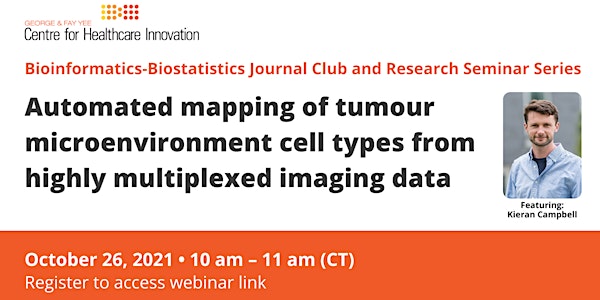Discussion Lead
Kieran Campbell, Canada Research Chair in Machine Learning for Translational Biomedicine; Scientist, Lunenfeld-Tanenbaum Research Institute; Assistant Professor, University of Toronto
Biography
Kieran received his BSc from the University of Edinburgh in Mathematical Physics followed by a masters in Computational Biology at Cambridge University and a DPhil (PhD) in statistical genomics at Oxford University. He was subsequently a Banting postdoctoral fellow at the University of British Columbia and BC Cancer Agency (2017-2019). He is now Principal Investigator & Scientist at the Lunenfeld-Tanenbaum Research Institute, an Assistant Professor in the Departments of Molecular Genetics and Statistical Sciences, University of Toronto, and affiliate faculty at the Ontario Institute for Cancer Research.
Abstract
Highly multiplexed imaging technologies enable the quantification of the expression of up to 40 proteins while retaining sub-cellular spatial information in the tissue of origin. After segmentation to the single-cell level, a major analytical challenge is assignment of single cells to a priori known cell types. Here we present Astir, a novel probabilistic method for cell type assignment from highly multiplexed imaging data. We demonstrate Astir is robust to variability in cell segmentation, can perform fast inference at the million-cell scale, and has a calibrated probabilistic output that corresponds to image staining quality. I will finally introduce some ongoing projects including probabilistic clustering models for imaging mass cytometry that explicitly account for doublets created by cell segmentation errors, and extensions to continuous latent space models.
